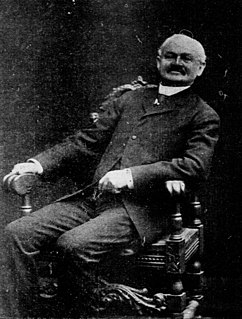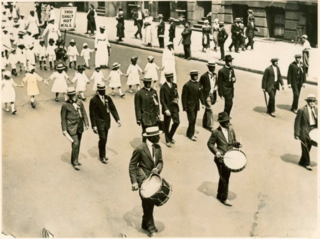Related Research Articles

Greenwood is a city in and the county seat of Leflore County, Mississippi, United States, located at the eastern edge of the Mississippi Delta region, approximately 96 miles north of the state capital, Jackson, and 130 miles south of the riverport of Memphis, Tennessee. It was a center of cotton planter culture in the 19th century.
Philanthropy is a form of altruism that consists of "private initiatives, for the public good, focusing on quality of life". Philanthropy contrasts with business initiatives, which are private initiatives for private good, focusing on material gain; and with government endeavors, which are public initiatives for public good, e.g., focusing on provision of public services. A person who practices philanthropy is a philanthropist.

The Igbo people are an ethnic group in Nigeria. They are majorly found in Abia, Anambra, Ebonyi, Enugu and Imo States. A sizable Igbo population is also found in Delta and Rivers States. Large ethnic Igbo populations are found in Cameroon, Gabon, and Equatorial Guinea, as well as outside Africa. There has been much speculation about the origins of the Igbo people, as it is unknown how exactly the group came to form. Geographically, the Igbo homeland is divided into two unequal sections by the Niger River – an eastern and a western section. The Igbo people are one of the largest ethnic groups in Africa.

The American Federation of Teachers (AFT) is the second largest teacher's labor union in America. The union was founded in Chicago with Margaret Haley credited as its founder and first leader.

Canada is a country in North America. Its ten provinces and three territories extend from the Atlantic to the Pacific and northward into the Arctic Ocean, covering 9.98 million square kilometres, making it the world's second-largest country by total area. Its southern and western border with the United States, stretching 8,891 kilometres (5,525 mi), is the world's longest bi-national land border. Canada's capital is Ottawa, and its three largest metropolitan areas are Toronto, Montreal, and Vancouver.

African-American newspapers are news publications in the United States serving African-American communities. Samuel Cornish and John Brown Russwurm started the first African-American periodical called Freedom's Journal in 1827. During the antebellum South, other African-American newspapers sprang forth, such as The North Star founded in 1847 by Frederick Douglass.
The Jeanes Foundation, also known as the Negro Rural School Fund or Jeanes Fund, helped support education and vocational programs for African American in rural communities from 1908 to the 1960s. It was founded by Anna T. Jeanes with help from Booker T. Washington in 1907.
African-American Vernacular English (AAVE) has been the center of controversy about the education of African-American youths, the role AAVE should play in public schools and education, and its place in broader society.

The Igbo, whose traditional territory is called the Bight of Biafra, became one of the principal ethnic groups to be enslaved during the Trans-Atlantic Slave Trade. An estimated 14.6% of all slaves were taken from the Bight of Biafra between 1650 and 1900. The Bight’s major slave trading ports were located in Bonny and Calabar. The majority of Igbo slaves were kidnapped during village raids. The journey for Igbo slaves often began in the ancient Cave Temple that was located in Arochukwu Kingdom. During this period, the three Igbo Kingdoms followed the same culture and religion, yet tended to operate very differently from each other. The Kingdom of Nri and the Independent Igbo States did not practice slavery, and slaves from neighbouring lands would often flee to these kingdoms in order to be set free. Arochukwu, on the other hand, practiced a system of indentured servitude that was remarkably different from chattel slavery in the Americas. Eventually, with Europeans beginning to encroach on Igbo territory, causing the kingdoms to desire weaponry to defend themselves. In order to obtain European goods and weaponry, Arochukwu began to raid villages of the other Igbo kingdoms - primarily those located in the Igbo hinterlands. People would be captured, regardless of gender, social status, or age. Slaves could have been originally farmers, nobility, or even people who had committed petty crimes. These captured slaves would be taken and sold to European slave traders on the coast. Another way people were enslaved was through the divine oracle who resided in the Cave Temple complex. All Igbos practiced divination called Afa, but the Kingdom of Arochukwu was different because it was headed by a divine oracle who was in charge of making decisions for the king. During this time, if someone committed a crime, was in debt, or did something considered an "abomination", they would be taken to the cave complex to face the oracle for sentencing. The oracle, who was also influenced by the demands of European slave traders, would sentence these people to slavery, even for small crimes. The victim would be commanded to walk further into the cave so that the spirits could "devour" them, but, in reality, they were taken to an opening on the other side and loaded directly onto a waiting boat. This boat would take them to a slave ship en route to the Americas.
A Karamu Ya Imani is a feast that takes place on January 1, the seventh day of the Kwanzaa period. A Kwanzaa ceremony may include drumming and musical selections, libations, a reading of the African Pledge and the Principles of Blackness, reflection on the Pan-African colors, a discussion of the African principle of the day or a chapter in African history, a candle-lighting ritual, artistic performance, and, finally, a feast, a Karamu.
What came to be known as the Atlanta Compromise stemmed from a speech given by Booker T. Washington, president of the Tuskegee Institute, to the Cotton States and International Exposition in Atlanta, Georgia, on September 18, 1895. It was first supported and later opposed by W. E. B. Du Bois and other African-American leaders.

The National Black United Front (NBUF) is an African-American organization formed in the late 1970s in Brooklyn, New York. Its headquarters are in South Shore, Chicago, Illinois.
Thomy Lafon (1810–1893) was a Creole of color, businessman, and philanthropist in New Orleans.

Robert Reed Church Sr. was an African-American entrepreneur, businessman and landowner in Memphis, Tennessee, who began his rise during the American Civil War. He was the first African-American "millionaire" in the South. Church built a reputation for great wealth and influence in the business community. He founded Solvent Savings Bank, the first black-owned bank in the city, which extended credit to blacks so they could buy homes and develop businesses. As a philanthropist, Church used his wealth to develop a park, playground, auditorium and other facilities for the black community, who were excluded by state-enacted racial segregation from most such amenities in the city.
The civil rights movement (1865–1896) aimed to eliminate racial discrimination against African Americans, improve their educational and employment opportunities, and establish their electoral power, just after the abolition of slavery in the United States. The period from 1865 to 1895 saw a tremendous change in the fortunes of the black community following the elimination of slavery in the South.

The anti-lynching movement was an organized public effort in the United States that aimed to eradicate the practice of lynching. Lynching was used as a tool to repress African Americans. The anti-lynching movement reached its height between the 1890s and 1930s. The first recorded lynching in the United States was in 1835 in St. Louis, when an accused killer of a deputy sheriff was captured while being taken to jail. The black man named Macintosh was chained to a tree and burned to death. The movement was composed mainly of African Americans who tried to persuade politicians to put an end to the practice, but after the failure of this strategy, they pushed for anti-lynching legislation. African-American women helped in the formation of the movement, and a large part of the movement was composed of women's organizations.
This is intended to be as comprehensive as possible list of encyclopedias and encyclopedic/biographical dictionaries ever published in any language. The list will not include reprinted editions but it is intended to list an alphabetical bibliography by theme and language to anything which resembles an A–Z encyclopedia or encyclopedic dictionary, both print and online. Entries are in the English language unless specifically stated as otherwise. Several entries may overlap and be listed under several different topics. For a simple list without bibliographic information see Lists of encyclopedias.
References
- ↑ Miller, Uzoma O. (2006). "National Black United Fund". In Jessie Carney Smith (ed.). Encyclopedia of African American business. Vol. 2 K-Z. Greenwood Publishing Group. pp. 587–588. ISBN 0-313-33111-1 . Retrieved 2009-05-18.
- ↑ Reid-Merritt, Patricia (2005). "National Black United Fund". In Molefi K. Asante, Ama Mazama (ed.). Encyclopedia of Black studies. SAGE Publications. pp. 358–359. ISBN 0-7619-2762-X . Retrieved 2009-05-18.
- ↑ Schultz, Jeffrey D. (2000). Encyclopedia of Minorities in American Politics: African Americans and Asian Americans. Greenwood Publishing Group. p. 218. ISBN 1-57356-148-7 . Retrieved 2009-05-18.
- ↑ Bremner, Robert Hamlett (1988). American philanthropy (2 ed.). University of Chicago Press. p. 208. ISBN 0-226-07325-4 . Retrieved 2009-05-18.
- ↑ Clotfelter, Charles T.; Ehrlich, Thomas (2001). Philanthropy and the Nonprofit Sector in a Changing America. Indiana University Press. p. 259. ISBN 0-253-21483-1 . Retrieved 2009-05-18.